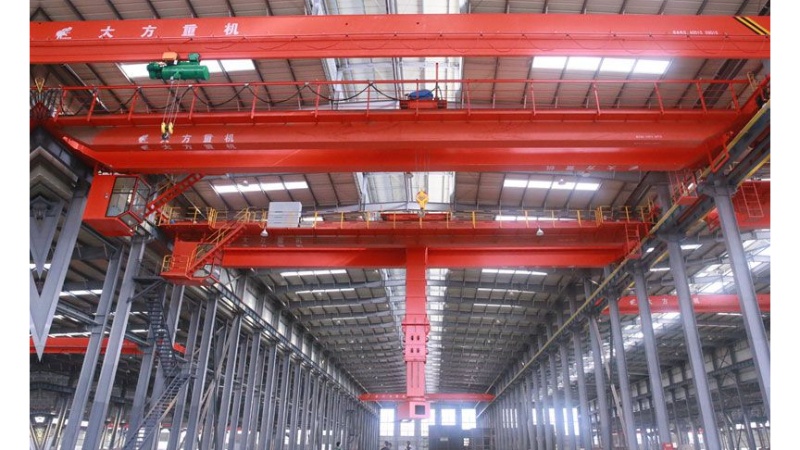
The Core Role of Overhead Cranes
In modern industrial production and infrastructure construction, overhead cranes are indispensable equipment. Whether in steel smelting, machinery manufacturing, automobile production, port logistics, or energy development, overhead cranes play a crucial role in efficient material handling and precise lifting. Their stable performance, strong load-bearing capacity, and diverse application scenarios make them essential for improving production efficiency and ensuring operational safety across various industries.
With the continuous upgrade of global manufacturing and the ongoing development of infrastructure projects, the demand for overhead cranes remains steady. When purchasing overhead cranes, enterprises not only consider their lifting capacity but also focus on stability, operational efficiency, and maintenance costs, driving the industry toward more efficient, safe, and precise solutions.
Major Types of Overhead Cranes and Application Scenarios
Overhead cranes come in various structural forms to meet different application needs. They can be categorized into single-girder overhead cranes, double-girder overhead cranes, metallurgical overhead cranes, and explosion-proof overhead cranes.
1. Single-Girder Overhead Cranes
Ideal for small and medium-sized factories, warehouses, and maintenance workshops, these cranes have a compact structure, lightweight design, and are cost-effective. They are widely used in light manufacturing industries and assembly lines.
2. Double-Girder Overhead Cranes
Used in heavy-duty industries such as steel manufacturing, shipbuilding, and large-scale industrial plants, double-girder overhead cranes offer higher lifting capacity and superior structural strength. They provide enhanced stability and precision, making them suitable for handling large and heavy loads.
3. Metallurgical Overhead Cranes
Designed for the harsh environment of steel mills, these cranes are resistant to high temperatures and can withstand extreme working conditions. They are essential for tasks like molten metal handling and precise material transport in the metallurgical industry.
4. Explosion-Proof Overhead Cranes
Explosion-proof overhead cranes used in industries dealing with flammable and explosive materials, such as chemical plants and oil refineries, explosion-proof overhead cranes ensure safe lifting operations in hazardous environments by incorporating specially designed motors and electrical components.
The Importance of Reliability and Safety in Overhead Crane Operations
For enterprises, ensuring the reliability and safety of overhead cranes is a top priority. A well-maintained and properly operated crane minimizes downtime and reduces accident risks, ensuring smooth industrial production.
Key factors affecting the safety and reliability of overhead cranes include:
- Structural Durability: High-quality materials and advanced engineering designs extend the service life of the crane and prevent structural failures.
- Advanced Control Systems: Modern overhead cranes incorporate electronic control systems with features like anti-sway technology, overload protection, and automated positioning, improving precision and safety.
- Regular Maintenance and Inspection: Preventive maintenance programs help identify potential failures early, reducing costly repairs and operational risks.
Global Market Demand and Industry Outlook
The global demand for overhead cranes is driven by industrial expansion and infrastructure development. Emerging markets in Asia, Africa, and South America continue to invest in new manufacturing facilities and logistics centers, creating a growing need for high-performance lifting equipment.
Additionally, industries such as renewable energy, aerospace, and data centers are increasing their reliance on overhead cranes to meet their specialized lifting requirements. This trend further strengthens the market’s growth potential.
Looking ahead, the overhead crane industry will continue to evolve, driven by technological advancements and market demands. Manufacturers that focus on improving safety, efficiency, and adaptability will remain competitive in an ever-changing global landscape.